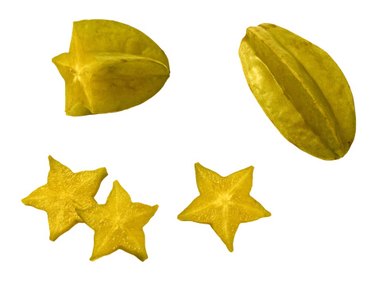
The star fruit, sometimes called the carambola, is native to Southeast Asia but is also grown for fruit production in the southern United States. The trees grow to about 20 feet in height and are considered evergreen because they grow only in climates that allow foliage to remain in place year-round. For this same reason, the star fruit's blooming and harvest seasons are somewhat erratic and can occur at various times during the year.
Common Harvest
Video of the Day
Because the star fruit only grows in warm climates without a distinct winter season, the harvest season can vary. Commonly, the harvest occurs during an eight-month period ranging from June through February depending on the blooming cycle. No tree produces fruit through this entire period, but trees will reach maturity at varying times during the period. In California, the peak of harvest is August through October and December through February.
Video of the Day
Common Blooming
The star fruit has two separate blooming periods. The April through May bloom leads to harvest in August, September and October, while the September and October bloom leads to the December, January and February harvest. Some blooming occurs throughout the year, which can lead to small harvests almost any time in the year.
Production Patterns
Because of the various blooming and harvest periods, there are fresh star fruit available through much of the year. The tree has some limited hardiness to frost and can tolerate temperatures to about 27 degrees Fahrenheit for short periods of time.
Harvest and Storage
Star fruit is harvested by hand when the fruit develops a yellow color in the grooves of the star shape. The fruit needs to be handled carefully to avoid bruising and should be stored at about 50 degrees F. The wood of the star fruit tree is also used for furniture and craft construction projects.